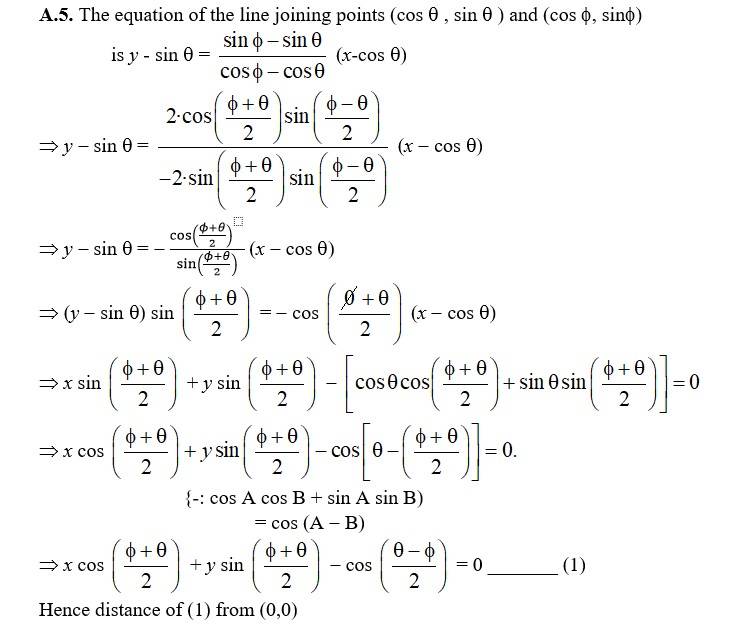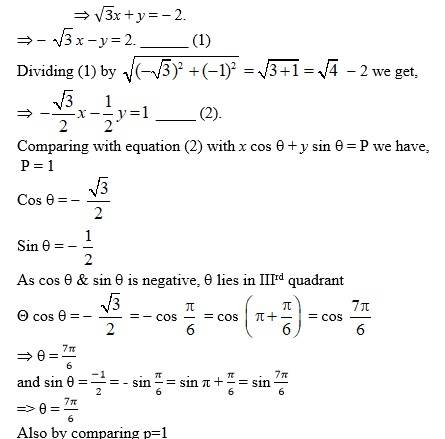Straight Lines
Get insights from 177 questions on Straight Lines, answered by students, alumni, and experts. You may also ask and answer any question you like about Straight Lines
Follow Ask QuestionQuestions
Discussions
Active Users
Followers
New answer posted
4 months agoContributor-Level 10
62.
The given eqn of the lines are
y - x = 0 _____ (1)
x + y = 0 ______ (2)
x - k = 0 ______ (3)
The point of intersection of (1) and (2) is given by
(y - x) - (x + y) = 0
⇒ y - x -x -y = 0
y = 0 and x = 0
ie, (0, 0)
The point of intersection of (2) and (3) is given by
(x + y) – (x – k) = 0
y + k = 0
y = –k and x = k
i.e, (k, –k)
The point of intersection of (3) and (1) is given by
x = k
and y = k
ie, (k, k).
Hence area of triangle whose vertex are (0, 0), (k, –k)
and (k, k) is
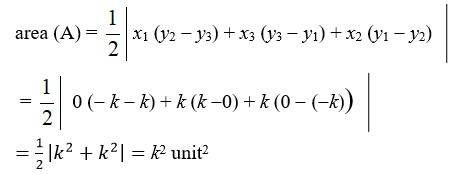
New answer posted
4 months agoContributor-Level 10
61. The given Eqn of the line is = 1 ______ (1)
so, Slope of line = -
The line ⊥ to line (1) say l2 has
Slope of l2 =
Let P (0, y) be the point of on y-axis where it is cut by the line (1)
Then,
y = 6
i.e, the point P has co-ordinate (0, 6)
Eqn of line ⊥ to and cuts y-axis at P (0,6) is
y – 6 = (x – 0)
3y – 18 = 2x
2x – 3y + 18 = 0
New answer posted
4 months agoContributor-Level 10
60. The given eqn of lines are
x - 7y + 5 = 0 ______ (1) ⇒ x = 7y - 5
and 3x + y = 0 _________ (2)
Solution (1) and (2) we get,
3 [7y – 5] + y = 0 .
⇒ 21y - 15 + y = 0
⇒ 22y = 15
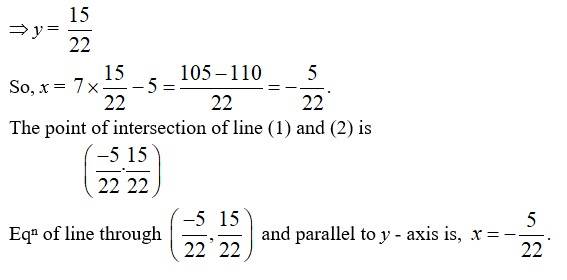
New answer posted
4 months agoContributor-Level 10
58. Let (0, y) be the point on y-axis which is at a distance 4 unit from the line
Then, the line
4x + 3y = 12.
4x + 3y - 12 = 0
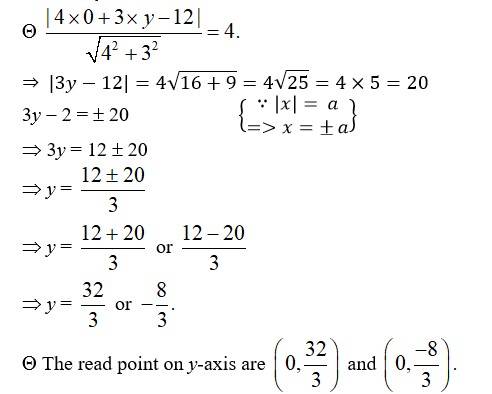
New answer posted
4 months agoContributor-Level 10
57. Let a and b be the x & y intercept. Then,
_____ (1)
Given, a + b = 1. ______ (2) b = 1 -a _____ (3)
and ab = -6 _____ (4)
Putting eqn (B) in (iii) we get a
a (1- a) = - 6
a - a2 = - 6
a2 - a - 6 = 0
a2 + 2a - 3a - 6 = 0
a (a + 2) - 3 (a + 2) = 0
(a + 2) (a -3) = 0
(a + 2) (a -3) = 0.
a = 3 or a = -2.
When a = 3, b = 1- a = 1 - 3 = - 2
When a = - 2, b = 1 - (-2) = 1 + 2 = 3
So, (a, b) = (3, -2) and (-2, 3)
Hence, eqn (1) becomes,
and
2x – 3y = 6 and 2y - 3x = 6
Gives the read eqn of lines
New answer posted
4 months agoContributor-Level 10
55. We have (k - 3) x - (4 - k2) y + k2 - 7 y + 6 = 0.
(i) When the line is parall to x-axis, all x coefficient = 0. then,
(k - 3)x - (4 -k2)y + k2 - 7y + 6 = 0 x.x - a x y where a = constant
Equating the co-efficient,
K – 3 = 0
=> k = 3
(ii) When the line is parallel to y-axis all y co-efficient = 0 then
- (4 -k)2 = 0
=> – 4 + x2 = 0
k2 = 4
k = ± 2.
(iii) When the line pares through origin, (0, 0) need satisfy the given eqn then,
k2 - 7k + 6 = 0
k2 - k – 6k + 6 = 0
k (k- 1) - 6 (k - 1) = 0
(k = 1) (k - 6) = 0
k = 1 and k = 6
New answer posted
4 months agoContributor-Level 10
54. The equation of line whose intercept on axes are a and b is given by,
Multiplying both sides by ab we get,
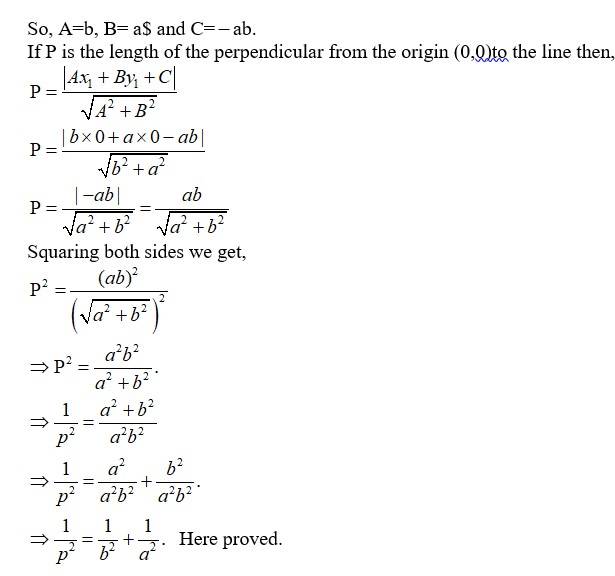
New answer posted
4 months agoContributor-Level 10
53. Let P be the point on the BC dropped from vertex A.
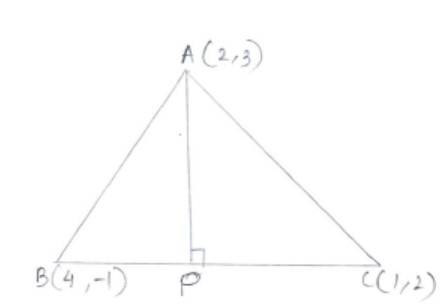
Slope of BC
= 1.
As A P BC,
Slope of AP=
Using slope-point form the equation of AP is,
x 2 = y 3
x – y – 2 + 3 = 0 x – y + 1 = 0
The equation of line segment through B(4, -1) and C(1, 2) is.
So, A=1, B=1 and C= 3.
Hence, length of AP=length of distance of A(2,3) from BC.
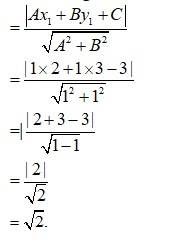
Taking an Exam? Selecting a College?
Get authentic answers from experts, students and alumni that you won't find anywhere else
Sign Up on ShikshaOn Shiksha, get access to
- 65k Colleges
- 1.2k Exams
- 687k Reviews
- 1800k Answers

